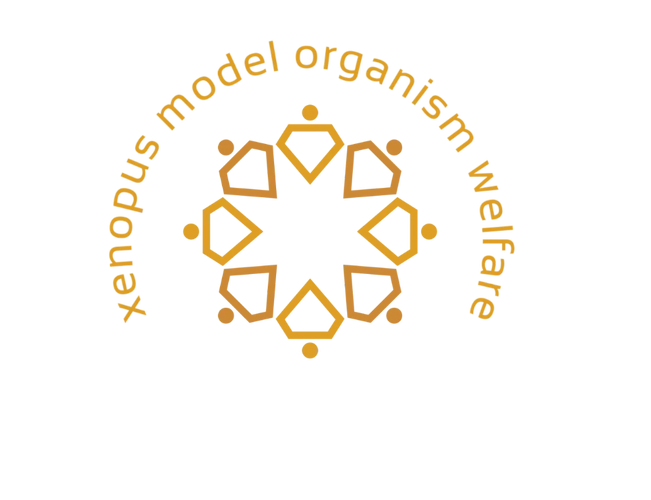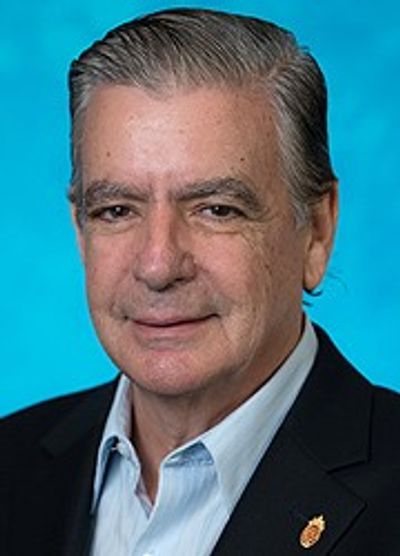Welcome to the Xenopus Model Organism Welfare Organization
PLEASE ATTEND THE RSPCA/NC3RS WEBINAR JUNE 25TH https://docs.google.com/forms/d/e/1FAIpQLSedHX8iQZZfohAbTF-HESen4Qp5gteeWvFlM

PLEASE ATTEND THE RSPCA/NC3RS WEBINAR JUNE 25TH https://docs.google.com/forms/d/e/1FAIpQLSedHX8iQZZfohAbTF-HESen4Qp5gteeWvFlM

mission statement - husbandry - case studies - shipping - testing - expert panel - adverse events & remedies - resources - funding - rules - notes on a healthy frog - a notes on a healthy colony - notes on a healthy model organism - oversight- researcher spotlight - research
executive board - white paper - grants and student support - veterinary advisory committee - announcement at xenopus conference - papers
Edward De Robertis is a member of the National Academy of Sciences, the American Academy of Arts and Sciences and the European Molecular Biology Organization. He is also a corresponding member of the Latin American Academy of Sciences, the Buenos Aires National Academy of Sciences and the Academy of Sciences of Uruguay. Active in Latin American affairs, he serves on the council of the Latin American Academy of Sciences, and has been on the scientific board of the Pew Charitable Trusts Latin program for over 25 years. De Robertis received honoris causa doctorates from the Universités Sorbonne and his alma mater the University of the Republic of Uruguay. From 2002 to 2006 he was President of the International Society of Developmental Biologists. He received the Ross Harrison prize in developmental biology, the Society for Developmental Biology (USA) Lifetime Achievement Award, and the Kowalevsky Medal in Evolution and Development. Summary of scientific research Edward De Robertis studies the molecular patterning mechanisms that control the evolution of the animal body plan. He has cloned several genes that code for secreted antagonists of growth factors that are used by embryonic cells to form morphogen gradients. These proteins control tissue differentiations in all bilateral animals. In 1984 Edward De Robertis, together with his close colleague the late Walter Gehring, isolated the first vertebrate development-controlling gene, now called Hox-C6. Hox genes encode DNA-binding proteins that determine the differentiation of cells along the antero-posterior body axis, both in fruit flies and vertebrates. In the 1990s De Robertis carried out the systematic dissection of the molecular mechanisms that mediate embryonic induction. In 1924 Hans Spemann and Hilde Mangold had identified a region of the amphibian embryo that was able to induce the formation of Siamese twins after transplantation. De Robertis isolated genes expressed in this region. He discovered Chordin, a protein secreted by dorsal cells that binds Bone Morphogenetic Protein (BMP) growth factors, facilitating their transport to the ventral side of the embryo, where Chordin is digested by the Tolloid protease, releasing BMPs for signaling. This flow of growth factors determines dorsal (back) to ventral (belly) tissue differentiations in most bilateral animals, such as fruit flies, spiders, early chordates and mammals. However, the Chordin/Tolloid/BMP axis was inverted during evolution between invertebrates and vertebrates. The De Robertis laboratory is currently investigating the regulation of the Wnt signaling pathway by pinocytosis, multivesicular endosomes and lysosomes, and its integration with embryonic patterning. In sum, De Robertis has been a pioneer in the remarkable current realization that the molecular mechanisms of antero-posterior and dorsal-ventral patterning are common to all animal embryos. These discoveries were foundational for the young scientific discipline of Evolution and Development, commonly known as Evo-Devo. The use of conserved gene networks during development has channeled the outcomes of evolution by Natural Selection arising from Urbilateria, the last common ancestor of vertebrates and invertebrates.

For cellular life to exist, genetic material must be copied and passed on to newly-divided cells. In eukaryotes, this process is phenomenally accurate and occurs with an error rate of around one in a billion. The fidelity of DNA replication is ensured by both the biochemical composition of the replication machinery and careful orchestration of the different stages of replication. Decades of study have yielded much information about; replication ‘initiation’, in which macromolecular machines termed ‘replisomes’ are loaded and activated at ‘origins’; and replication ‘elongation’, in which replisomes copy DNA at ‘replication forks’. In contrast, termination, which is the final stage of DNA replication, is poorly understood. In the Dewar lab, we are working to understand the mechanisms that underlie the termination of DNA replication. It is critical for human health that we gain a complete understanding of how DNA replication works, given that various mutations in the vertebrate replication machinery that are sufficient to cause a variety of diseases (from cancer, to drwarfism, and even neurodegeneration) and subversion of DNA replication is an essential part of oncogenesis.
The primary tool used by the Dewar lab is cell extracts, which we derive from eggs of the African clawed frog, Xenopus laevis. These ‘egg extracts’ contain sufficient quantities of cellular proteins to support multiple embryonic cell cycles, even in the absence of translation. Therefore, egg extracts allow us to stimulate chromosome duplication on both full length chromosomes but also customizable plasmid DNAs. To study these processes in unprecedented detail we exploit a plasmid DNA template that contains a reversible replication barrier. This allows us to halt replisomes at a defined location, then synchronously restart them and monitor their progression and composition. This approach recently led to the first biochemical model for replication termination (Dewar et al, 2015, Nature; Dewar et al, 2017, Genes Dev) and also supported studies of DNA repair (Duxin et al, 2014, Cell; Zhang et al, 2015, NSMB). We are currently using this approach to explore replication termination (Heintzman, Campos et al, 2019, Cell Rep) and develop biochemical sytems to study telomere replication.

We investigate ion channels of nerve and muscle fiber membranes that control electrical signaling. This work involves molecular biology and electrophysiology to understand the structure to function relations in ion channel function, and to determine the molecular basis of inherited mutations in the genes for these ion channels that cause specific channelopathies including myotonia and periodic paralysis.

Rue Jones-Green has worked with Xenopus species at The University of Cambridge Since 2002. Starting as an Animal Technician, then becoming the Chief Technician and NACWO (Named Animal Care and Welfare Officer). Rue has worked closely with John Gurdon for many years preparing his oocytes and ensuring his frog’s receive optimum care and management by overseeing every aspect of the colonies’ husbandry and maintenance is addressed. From the many years of being dedicated solely to the large colony, Rue has gained a wealth of experience working with several xenopus laboratories and has gained much knowledge. She has worked with many different Aquatic systems, water types, and aquatic species.
Xenopus achievements:
· Creating a poster detailing numerous xenopus clinical signs with photographs
· Building and growing a community to discuss health, welfare and husbandry
· Providing troubleshooting advice and consultation voluntarily for the xenopus community
Background: BSc (Hons) Animal Behaviour, Ecology and Conservation.
Post Graduate MSc modules in Applied Bioscience.

Dr. Feldman transformed the University of Virginia's animal research facilities in a long and dedicated career from 1977 to 2023. We welcome Dr. Feldman on the executive board and we will continue to learn from his intimate, long term, hands on knowledge of the use of xenopus frogs in an institutional setting. This will be invaluable for years to come in supporting the Xenopus Model Welfare Organization.

The Xenopus Model Welfare Organization will promote model sustainability. One continuing problem is that a lot of the oversight and care of xenopus appear to be based on other model organisms. This has put unsustainable burdens on researchers, and colony managers. It is increasingly clear the lack of species specific/model specific knowledge has put pressure on the Model. For xenopus model welfare and model sustainability there is a need gather, categorize, and contextualize some of the basic questions and ideas about the care and transport of xenopus, what keeps colonies thriving (ranges of tolerance and optimization), share what's known and unknown, and act on strategies for the growth and sustainability of the xenopus frogs' use for modeling human disease in biomedical research. The Xenopus Model Welfare Organization believes:
1. Xenopus give a very high return per research dollar spent.
2. As a model, xenopus should not carry the burdens other models just because no information exists.
3. By and large, research outcomes are not compromised by a "pathogen." In addition, much more needs to be learned about their husbandry conditions, (including institutional factors that affect frog health). Mortality has confounded even some of the most seasoned husbandry managers. There is no community recognized standards of care, and no approach to xenopus that prioritizes the welfare of the model. In sum, the Xenopus Model Welfare Organization will be an open, collaborative, curated, comprehensive resource that considers the welfare and sustainability of the model organism xenopus.
4. Having an evolving welfare site will be a valuable resource, and support xenopus as a model for the future. The info should be citable, and husbandry research and tried and true methods available in an open place and have an ongoing, fluid, citable community of interested people contributing.
5. There are various ways of keeping xenopus - there is no "one size fits all" methodology, and there is a balance of practical knowledge, tried and true methods, and research supported expertise that can be used to keep the model healthy, and individual frogs, frog colonies, and all people using the frog happy.
6. The inputs on this site, by all contributors, can be referenced to solve problems, though the organization exists so the information on it will become better over time, thus, serving the community in a comprehensive way, some information will be repeated by more than one source, and where needed contextualized considering the custodial role the welfare organization has for the health of the model.
7. Failure to address disparate and sometimes outdated ideas, and have a central location for clarification, will negatively affect the model's use, the model's health, and frog health.
8. Xenopus are underutilized and can have an increasing role in basic science and modeling human disease.
9. The xenopus Model Welfare Organization will help to increase the use of xenopus as a model.
10. A formal white paper will strategically inform the continued efforts of the organization.
11. The strategies, views, and expert information shared by the Xenopus Welfare Organization will be supported by methods currently in use, case studies, shared/curated information, a veterinary advisory panel, a rotating expert panel, and an executive board.
12. Xenopus frogs are an important model, though are used by a relatively small group of researchers, which has compounded and contributed to some of the some of the challenges, including the reliance on PCR to disproportionately influence the goal of a "healthy frog". Thus it is imperative the support for the model the Xenopus Welfare Organization provides, with community involvement.
13. Xenopus need to be available for worldwide use in labs both large and small.
14. Embracing and supporting the goals of the Xenopus Welfare Organization is a comprehensive way forward for the future of Xenopus as a Model Organism.

The xenopus model organism welfare organization will support research and had its first research collaboration protocol approved by the IACUC at Michigan State University on August 30, 2023 contact us with your research proposal related to frog husbandry, model welfare, or similar.
We are actively seeking contributors, board members, and more - or sign up to get updates or just to express interest!
info@xenopuswelfare.org seeking collaboration with all researchers, government agencies, animal care technicians, veterinarians. Contact the Xenopus Model Welfare Organization - for the continuing health of xenopus as a model organism
Xenopus Model Organism Welfare Organization
Copyright © 2022 Xenopus Model Organism Welfare Organization - All Rights Reserved.
Powered by GoDaddy
We use cookies to analyze website traffic and optimize your website experience. By accepting our use of cookies, your data will be aggregated with all other user data.